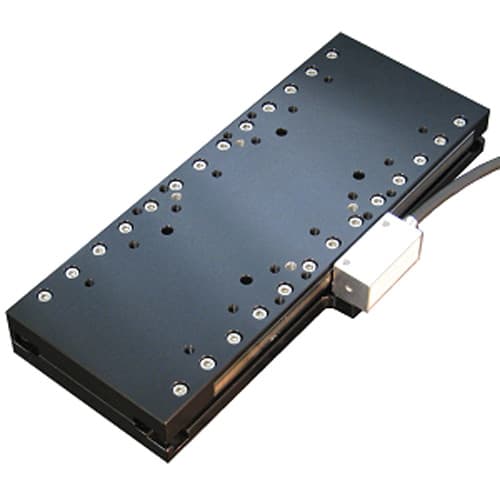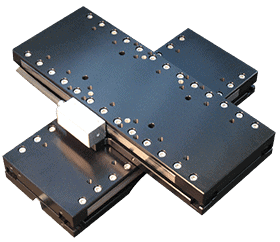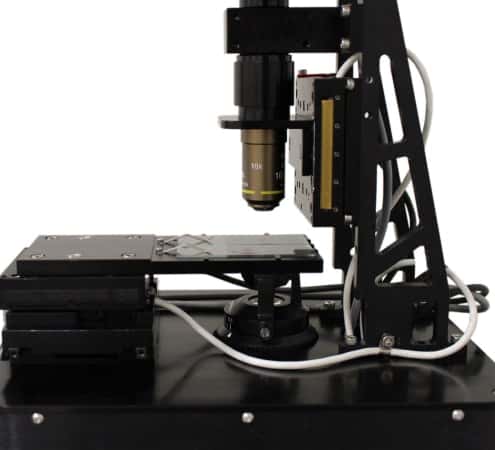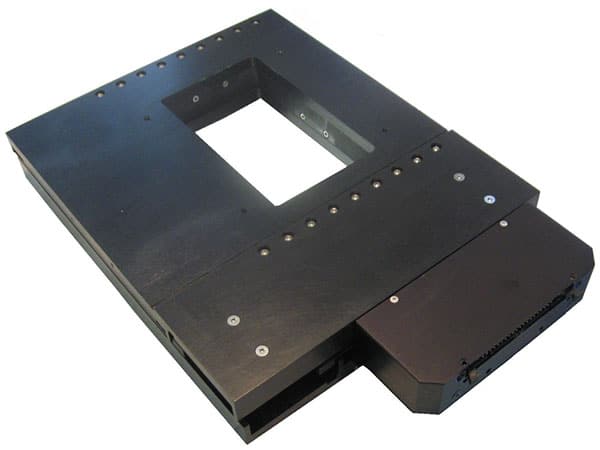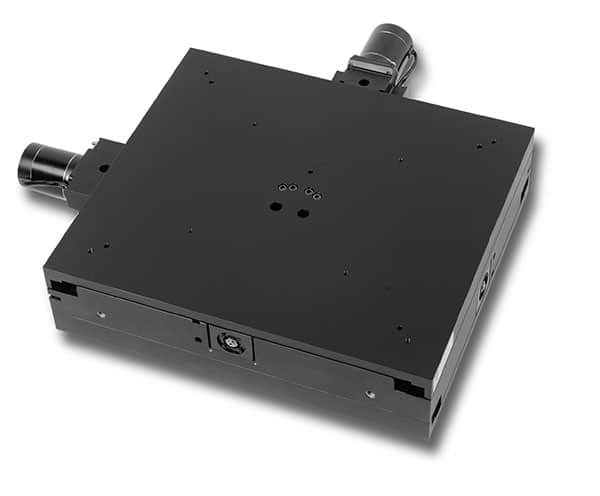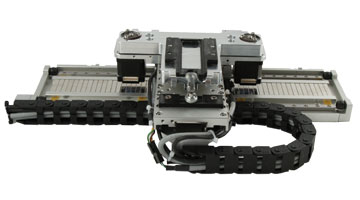Over the past five decades, Dover Motion has developed a portfolio of reliable, quality standard positioning tables that can be modified or configured to fit your specific application. Our linear tables and rotary tables can be combined to create a multi-axis set up, and paired with our motion control systems for a complete subassembly tailored for your project. From tables with the highest precision available today to high throughput and high speed workhorses, Dover Motion has the right cost-effective motion solution for your application.
Positioning Table Guide
What is a positioning table?
A positioning table is a precision motion system designed to facilitate accurate linear or rotational motion of components, assemblies, or instruments. It typically consists of precision guide rails, ball screws, and crossed roller bearings, delivering smooth, consistent motion with exceptional accuracy, reduced backlash, and the ability to handle significant loads. Positioning tables are widely used for applications that require exact positioning, such as automated systems, laboratory setups, and advanced manufacturing. They optimize workflows in tasks like inspection, testing, assembly, and imaging by enabling controlled and repeatable motion.
Common Types
Positioning tables come in various configurations tailored to your requirements:
- Manual Positioning Tables: Rely on mechanical controls like micrometers or adjustment screws for straightforward, user-directed positioning. Ideal for applications needing intermittent adjustments, such as in test benches or prototype development.
- Motorized Positioning Tables: Utilize stepper or servo motors for automated, programmable motion. Commonly used in high-throughput systems like microscopy, semiconductor manufacturing, and robotic automation.
- High-Precision Positioning Tables: Leverage advanced technologies and linear motors for sub-micron accuracy in critical applications, including super-resolution imaging or optical alignment.
How Do They Work?
Positioning tables operate by translating input motion—whether manual or motorized—into precise, controlled movements along one or more axes. Their design ensures repeatable accuracy and smooth operation, making them indispensable for applications requiring high precision.
Core Components and Mechanisms include:
- Motion Drive Systems:
- Manual Tables: Use micrometers, lead screws, or adjustment knobs to achieve linear or rotational movement through user input.
- Motorized Tables: Employ stepper or servo motors to automate motion, often controlled by software or programmable controllers.
- Bearing Systems:
- Crossed roller bearings or linear guides minimize friction and ensure stable, smooth motion.
- Feedback Mechanisms:
- Encoders provide real-time position data, enabling precise adjustments and accurate positioning.
- Base and Support:
- A rigid, vibration-resistant base supports the table and maintains alignment under varying loads.
Motion Path:
- Positioning tables guide components along a single axis (X, Y, or Z) or multiple axes in more complex setups (e.g., XY or XYZ configurations).
- Advanced systems may also offer rotational or tilt movement for applications like microscopy or optical alignment.
Control and Precision:
- Manual Control: The operator directly adjusts motion via knobs or screws, ideal for low-frequency adjustments or prototyping.
- Automated Control: Software-driven systems control motorized tables, allowing for pre-programmed movement sequences, synchronization with external instruments, or real-time adjustments.
Features That Set Positioning Tables Apart
- Accuracy and Repeatability: Ensure consistent placement with minimal deviation over repeated cycles.
- Load Capacity: Accommodate various weights, from delicate sensors to heavy-duty industrial components.
- Motion Options: Support single-axis or multi-axis configurations for linear, rotational, XY, and vertical motion paths.
- Durability: Built with robust materials to withstand demanding industrial and laboratory conditions.
How does integrating feedback systems, like encoders, enhance the precision of positioning tables?
Feedback systems, such as encoders, monitor and adjust the table's position in real time. This offers several advantages, such as:
- Improved Accuracy: Ensures the table moves to and stays in the desired position.
- Error Correction: Detects and compensates for deviations during operation.
- Consistent Performance: Maintains precision even as components wear over time. Feedback systems are especially useful in high-precision tasks like microscopy and semiconductor manufacturing.
What are the differences between open-frame and closed-frame positioning tables?
Open frame tables are lightweight positioning systems with an exposed, skeletal design that provides easy access to internal components for maintenance and integration. Key features include:
- Exposed structure.
- Well-suited for applications needing flexibility and easy integration with other equipment.
- Often used in laboratory or prototyping setups.
Closed frame tables are positioning systems with a rigid and enclosed design, offering a robust and stable structure. These tables are:
- Built with a rigid, enclosed structure.
- Designed to provide stability and protection from environmental factors.
- Ideal for high-precision and industrial applications where robustness is critical.
Can positioning tables be customized for specific applications, and what customization options are available?
Yes, positioning tables can be tailored to meet unique project needs. Common customization options include:
- Custom Travel Ranges: Extended or reduced movement distances.
- Material Choices: Using corrosion-resistant or lightweight materials for specific environments.
- Motor Options: Integrating different motors, such as stepper or servo, based on application demands.
- Mounting Configurations: Adapting the table for specific orientations or integration with other equipment.
- Feedback Systems: Adding encoders or other sensors to improve control and precision.

